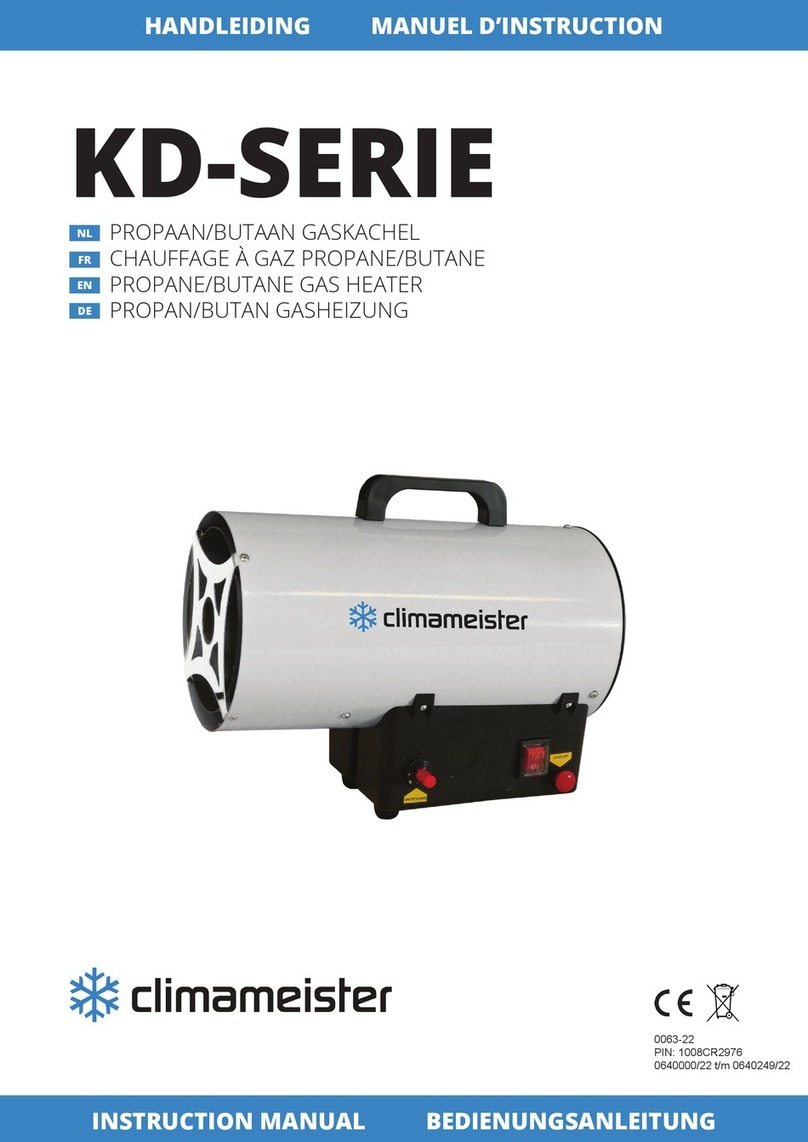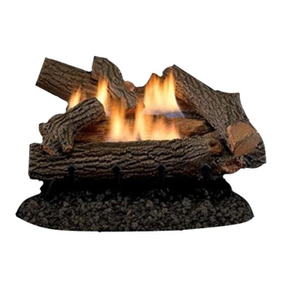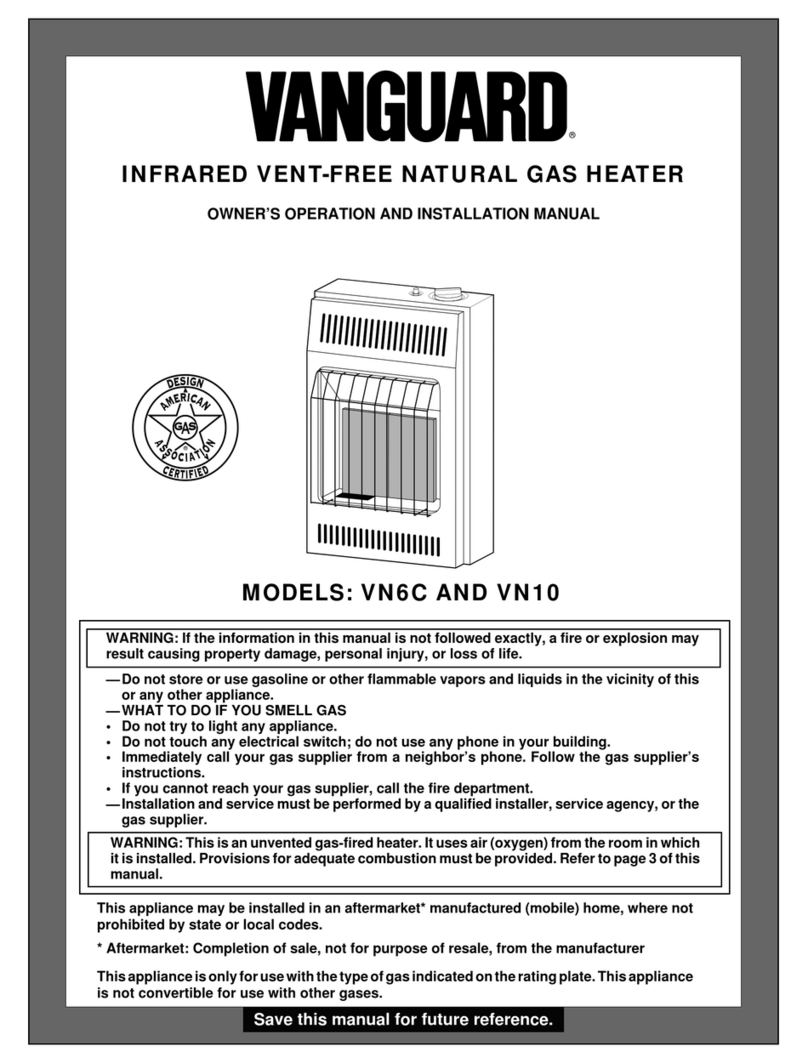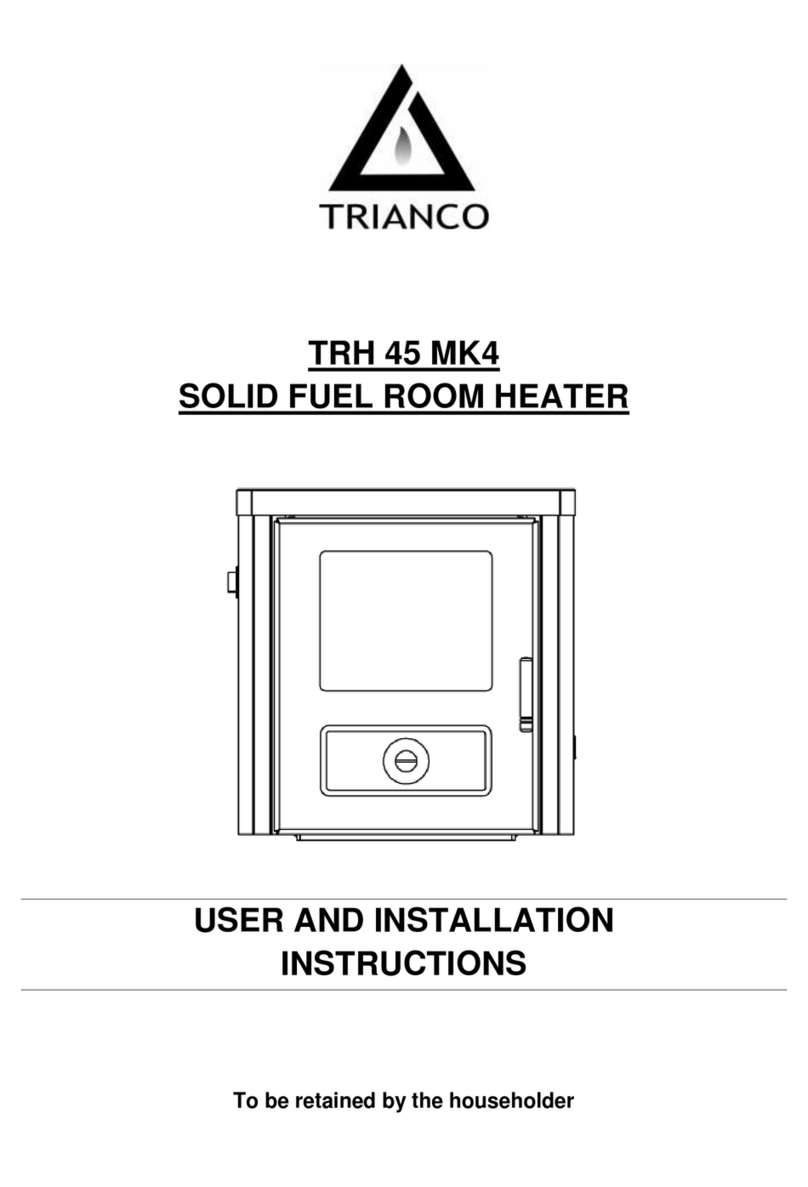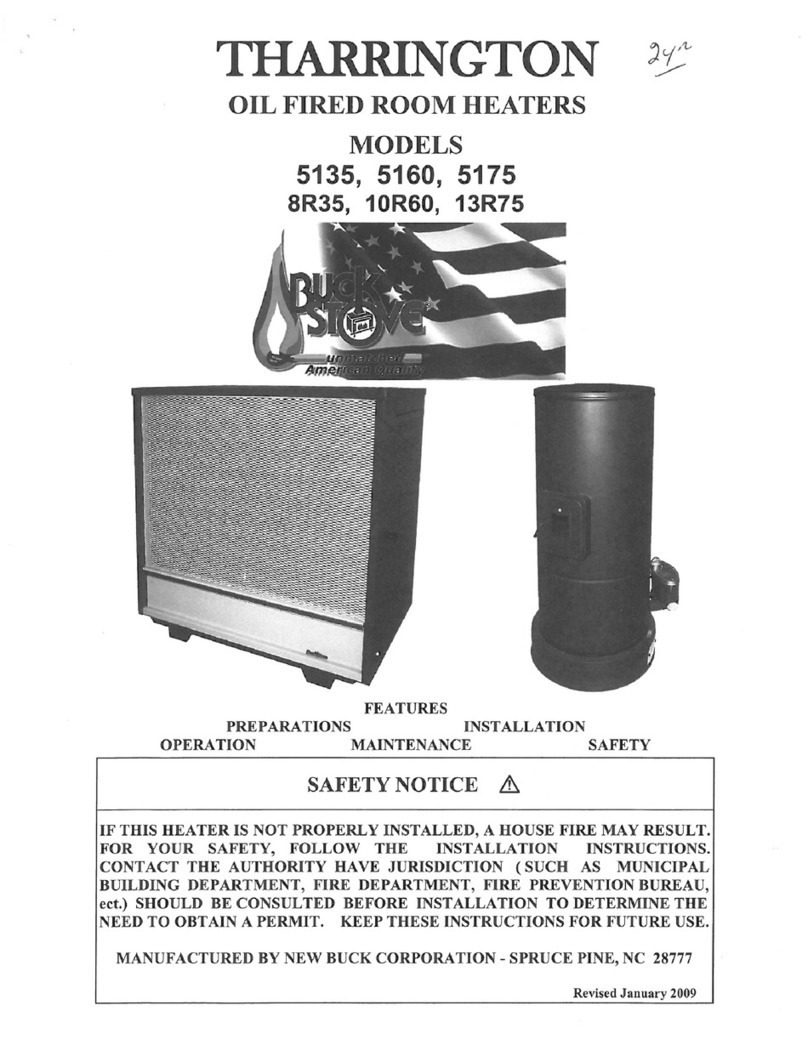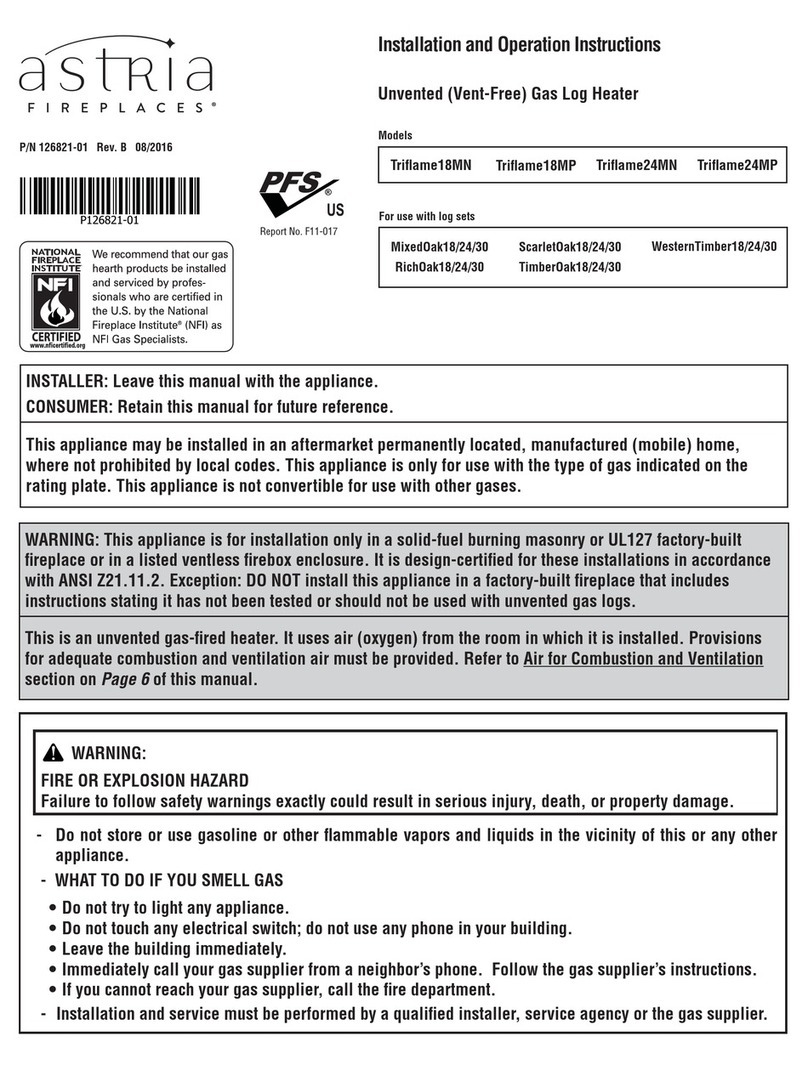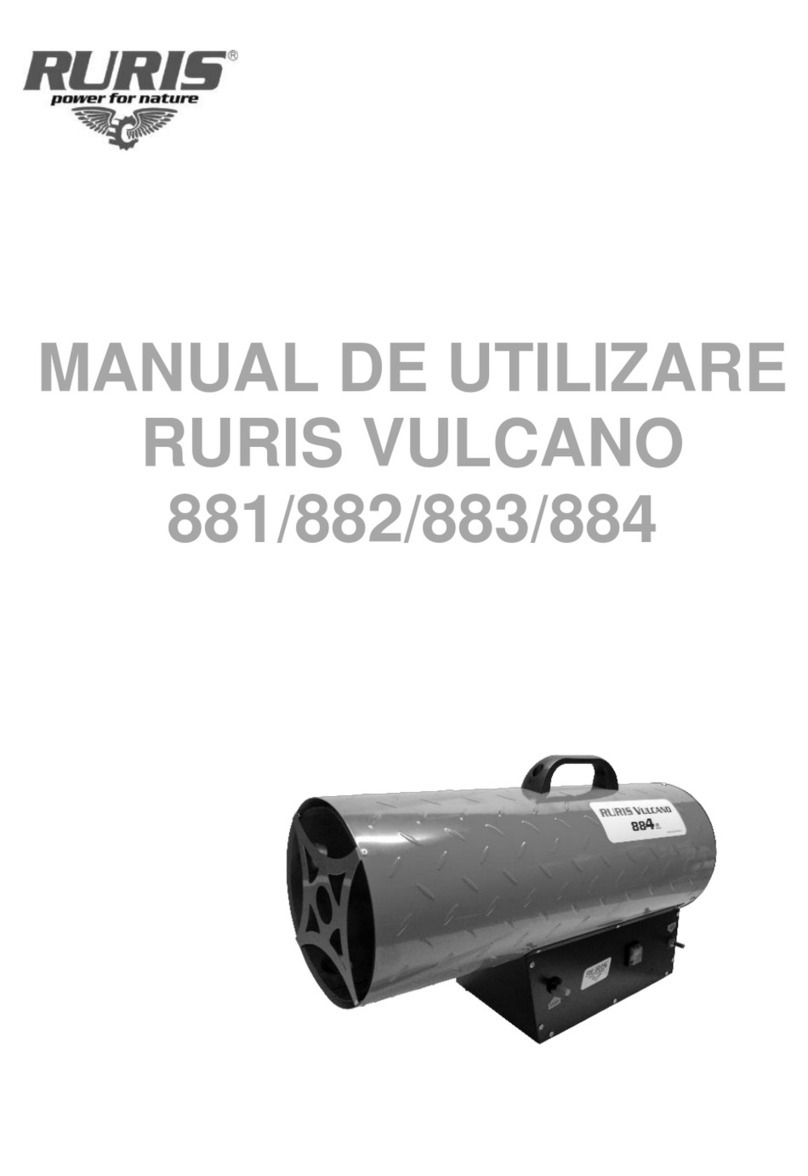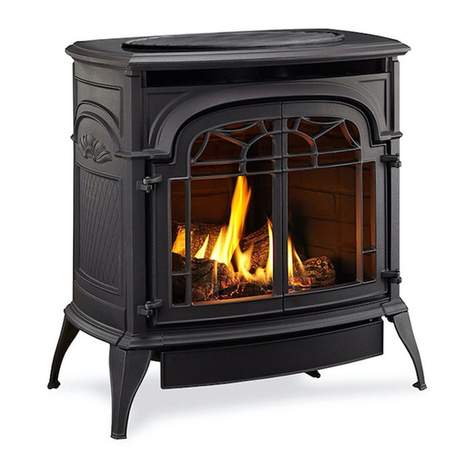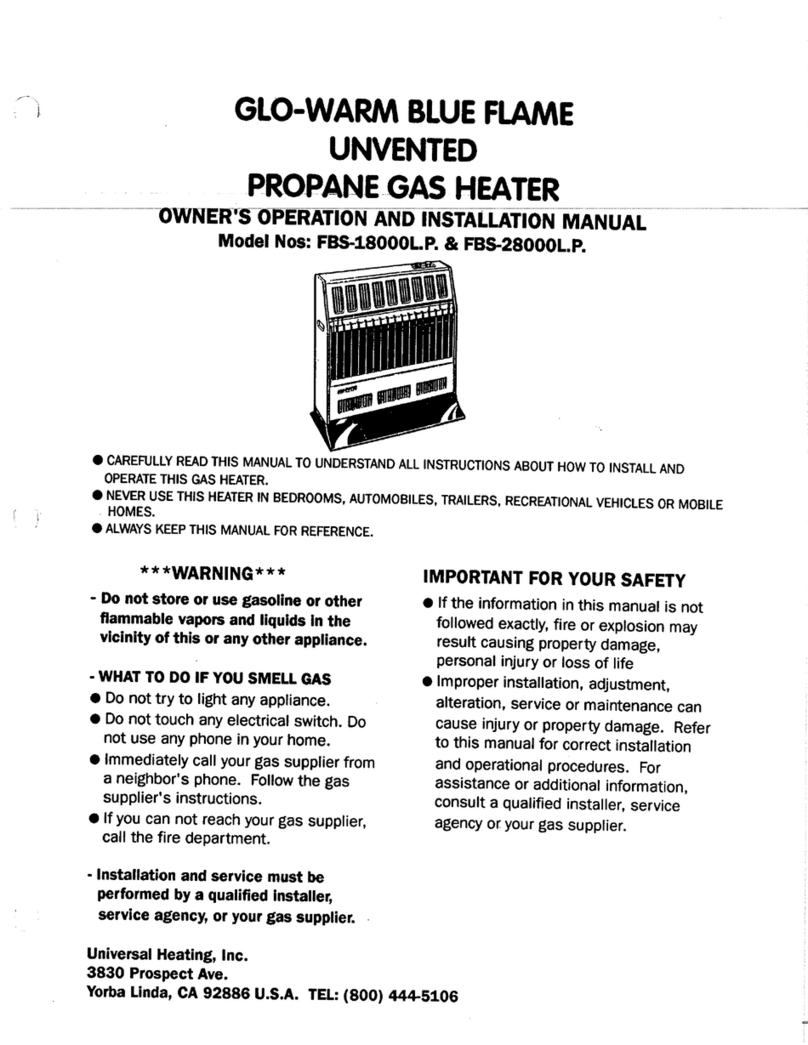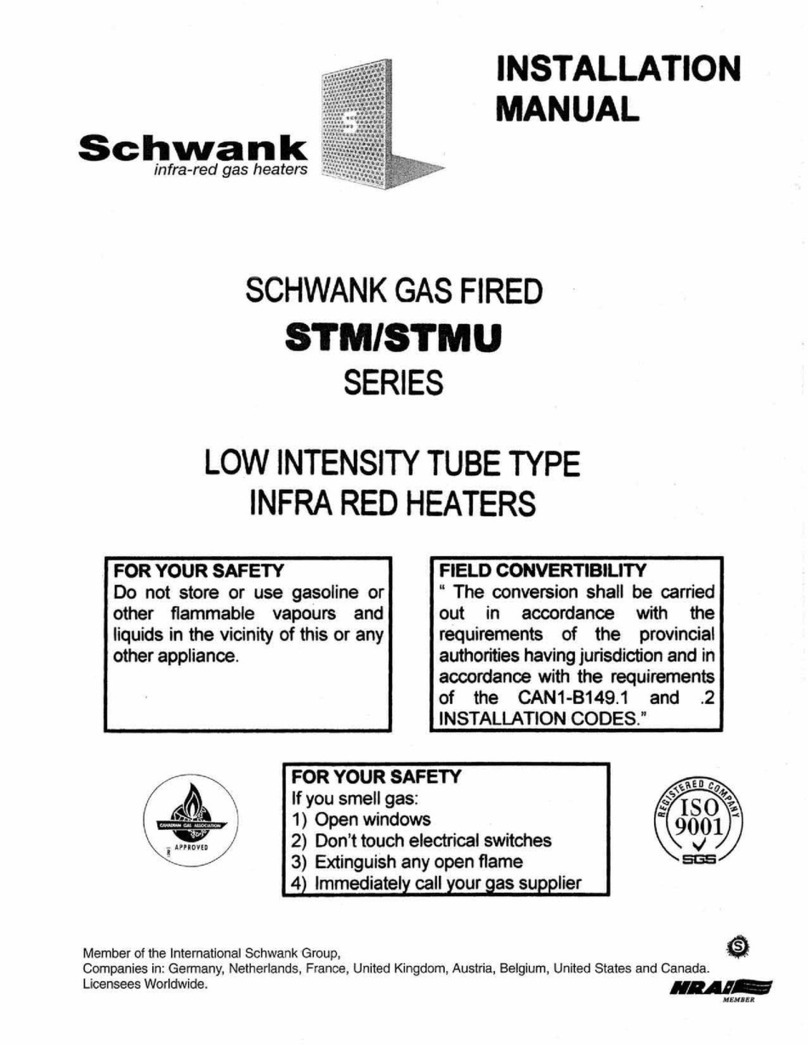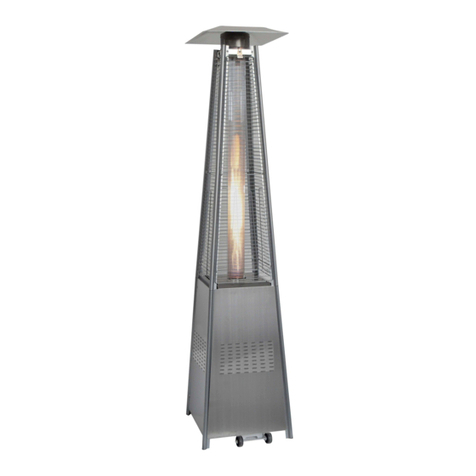- 9 -
Troubleshooting
OBSERVED PROBLEM POSSIBLE CAUSE REMEDY
When ignitor button is pressed,
there is no spark at ODS/pilot 1) Ignitor electrode positioned
wrong.
1) Replace ignitor
2) Ignitor electrode broken. 2) Replace ignitor
3) Ignitor electrode not
connected to ignitor cable. 3) Reconnect ignitor cable
4) Ignitor cable pinched or
wet.
4) Free ignitor cable if pinched by
any metal or tubing. Keep ignitor
cable dry.
5) Piezo ignitor nut is loose 5) Tighten nut holding piezo ignitor
to heater cabinet. Nut is located
inside heater cabinet at bottom.
6) Broken ignitor cable 6) Replace ignitor cable
7) Bad piezo ignitor 7) Replace piezo ignitor
When ignitor button is pressed,
there is spark at ODS/pilot but
no ignition.
1) Gas supply is turned off or
manual shutoff valve closed 1) Turn on gas supply or open
manual shutoff valve
2) Control knob not in PILOT
position 2) Turn control knob to PILOT
position.
3) Control knob not pressed
in while in pilot position. 3) Press in control knob while in
PILOT position.
4) Air in gas lines when
installed. 4) Continue holding down control
knob. Repeat igniting operation until
air is removed.
5) ODS/pilot is clogged. 5) Clean ODS/pilot (see Cleaning
and maintenance, page 16) or
replace ODS/pilot assembly.
6) Gas regulator setting not
correct Replace gas regulator.
ODS/pilot lights but flame goes
out when control knob is
released.
1) Control knob not fully
pressed in. 1) Press in control knob fully.
2) Control knob not
depressed long enough 2) After ODS/pilot lights, keep
control knob pressed in 30 seconds.
3) Manual shutoff valve not
fully open. 3) Fully open manual shutoff valve.
4) Thermocouple connection
loose at control valve. 4) Hand tighten until snug, then
tighten ¼ turn more.
5) Pilot flame not touching
thermocouple, which allows
couple to cool, causing pilot
flame to go out. This problem
could be caused by one or
both of the following:
a) Low gas pressure.
b) Dirty or partially clogged
ODS/pilot
5)
a) Contact local gas company.
b) Clean ODS/pilot or replace
ODS/pilot assembly.
6) Thermocouple damaged 6) Replace thermocouple
7) Control valve damaged 7) Replace control valve
Burner does not light after
ODS/pilot is lit. 1) Burner orifice is clogged. 1) Clean burner or replace burner
orifice.
2) Burner orifice diameter is
too small. 2) Replace burner orifice.
3) Inlet gas pressure is too
low. 3) Contact local gas company.










